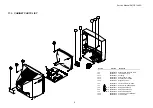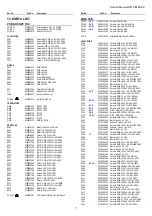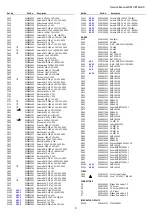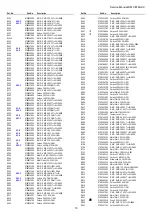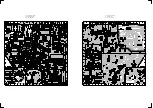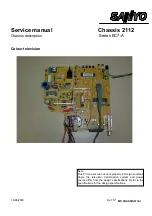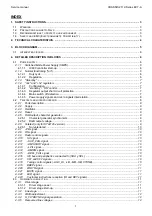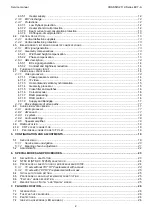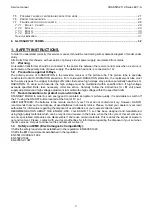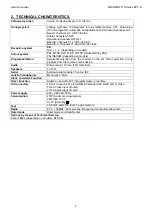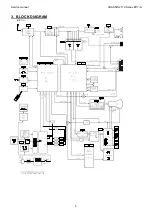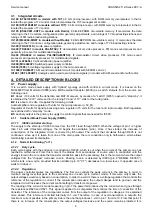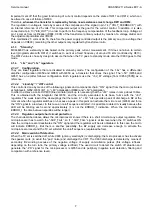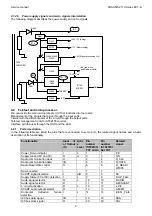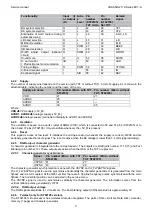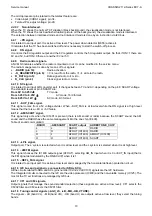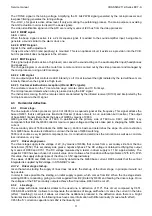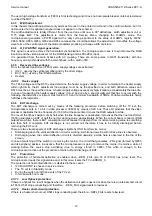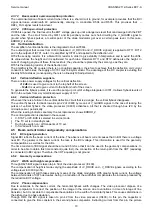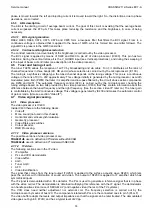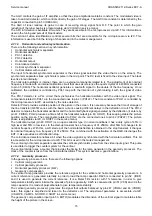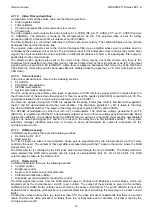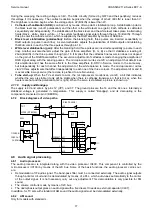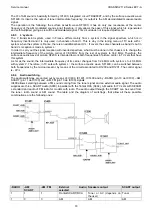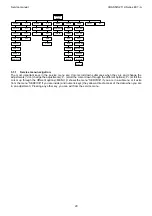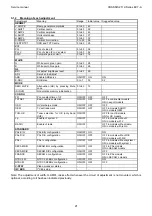
Service manual
CHASSIS 2112-Series EC7-A
6
3.1 Integrated
circuits.
IC-100 (ST92195B1B1 in models with TXT):
8 bits microprocessor, with ROM memory incorporated, in that is
located the program of TV control. It also incorporates the TXT management section.
IC-100 (ST92185B1B1 in models without TXT):
8 bits microprocessor, with ROM memory incorporated, in that is
located the program of TV control.
IC-125 (KS24C081-CSTF in models with Radio):
8 bits
EEPROM non-volatile memory. It memorises the data
referring to the TV controls, configuration data, geometry adjustments, and tunings of TV broadcasting stations and
tunings of FM radio broadcasting stations.
IC-125 (M24C04-MN6T in models without Radio):
4 Kbits
EEPROM non-volatile memory. It memorises the data
referring to the TV controls, configuration data, geometry adjustments, and tunings of TV broadcasting stations.
IC-300 (TDA 7233 S):
Audio power amplifier.
IC-400 (TDA8841 in models PAL/NTSC):
IF demodulator circuit, video processor, FM mono sound processor and
geometry processor for multistandard signals.
IC-400 (TDA8842 in models PAL/SECAM/NTSC):
IF demodulator circuit, video processor, FM mono sound
processor and geometry processor for multistandard signals.
IC-701 (LA7840L):
Vertical deflection power amplifier.
IC-800 (MC44603P):
Switched power supply controller.
IC-850 (7805):
5V-voltage regulator, supply for the microprocessor.
IC 1400 (TDA9830T):
AM sound demodulator circuit. (models with SECAM L and L’)
IC1401 (HEF 4052BT):
Analogic switch used to switch audio signals (in models with AM sound and/or with radio).
4. DETAILED DESCRIPTION IN BLOCKS
4.1 Power
supply.
It is a switch mode power supply with “flyback” typology and with control in current mode. It is based on the
MC44603P from Motorola (IC800) and a MOS external transistor (Q800) as a switch. Outputs from the source are
following ones:
B1
: About +106 volts for the deflection and MAT. Moreover, by means of a “switch” (Q851), opened in “stand-by”, it
is obtained the "+33V" volts used for the tuning TV and “+11V” volts for the tuning radio.
B2
: It is about +10 volts. It supplies the following circuits:
Audio amplifier and a regulator of 5 volts for the microprocessor (+5V_M).
Regulator of 8 volts for signal processing and a regulator of 5 volts for the tuner and radio module. Both regulators
are switched off in “stand-by” mode.
B5
: Auxiliary output in the primary to supply the control signals that are needed for IC800.
4.1.1
Switched Mode Power Supply (SMPS).
4.1.1.1
IC800 controller start-up.
The supply to the start-up of IC800 comes from the C811 load through R805. When the voltage of pin 1 is higher
than 14,5 volts (threshold voltage), the IC begins the oscillation (pin3). Once it has started, the increase of
consumption of the integrated circuit is covered by B5 output. The current that circulates through R805 is not
continuous, since as it is taken from one of the main poles, there is conduction only to half-waves, which allows
maintaining reduced its dissipation.
4.1.2
Normal functioning ("on").
4.1.2.1 Duty
cycle.
Each cycle begins with the entrance in conduction of Q800, which is cut when the current of the primary one has
reached a certain level. From this moment, the diodes from secondaries of source enter in conduction until the
energy stored in the core while the transistor conduction pass to the secondary; this is the moment where the output
voltages from the “chopper” decrease to zero. Passing to zero is detected by IC800 (pin 8 "DEMAG. DETEC"),
which starts a new cycle, provided that its oscillator (pin 10 "CT") decreases to a lower level. In opposite case it
waits for it does it.
4.1.2.2 Regulation.
The power controller makes two regulations. The first one controls the peak current in the primary, in order to
maintain energy level that goes to the secondary one in each cycle (current mode). If this were only made, the
output voltages would vary based on consumption. In order to avoid it, there is a voltage regulation that controls the
reference of the regulation in current: if the consumption increases, the output voltages tend to go down and the
integrated circuit increases the current control setting to transfer more power.
The reading of the current is made measuring in pin 7 the power fail produced by the current when it goes through
the resistances R820 and R821. This signal is applied to a comparator that controls the time of conduction of the
transistor. The reference of the comparator comes from the output of the regulation in voltage as it is explained
more ahead. This reference is limited internally to 1 volt. Therefore, in case of overconsumption in outputs, the
maximum current possible in the primary side is the one that produces 1 volt in pin 7 from de IC. From that point, if
there is an increase of the consumption, the output voltages decrease and the source remains protected. It is
Summary of Contents for CE14A2-C
Page 20: ...Service manual CHASSIS 2112 Series EC7 A 5 3 BLOCK DIAGRAM ...
Page 48: ......

